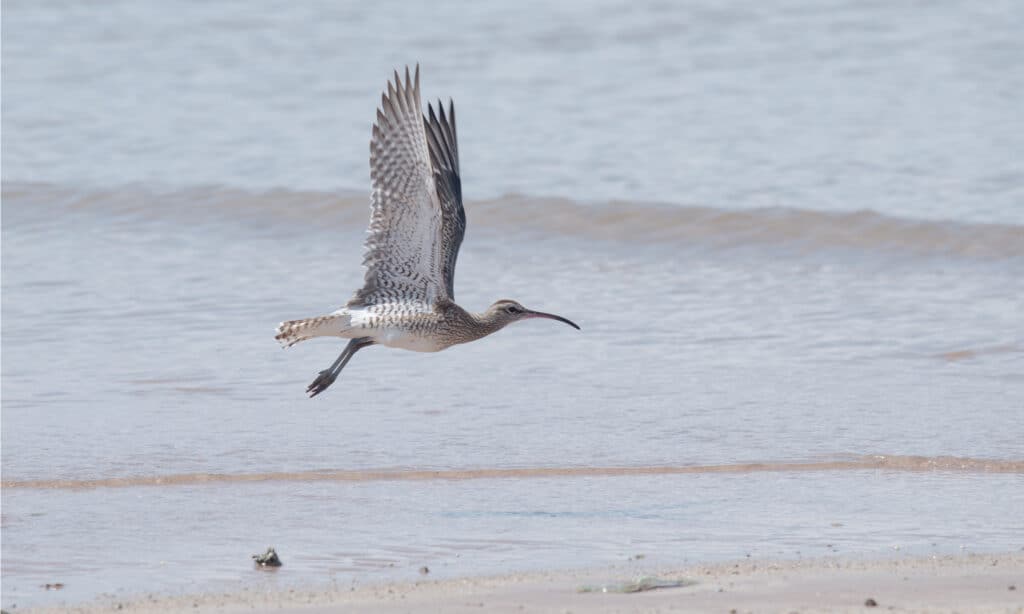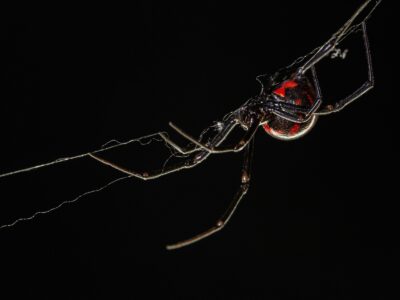Whimbrel
.jumbotron {
background-image: url(“https://a-z-animals.com/media/2022/05/whimbrel-on-beach-400×300.jpg”);
}
}
@media only screen and (min-width: 641px) and (max-width: 920px) {
.jumbotron {
background-image: url(“https://a-z-animals.com/media/2022/05/whimbrel-on-beach-470×370.jpg”);
}
}
@media only screen and (min-width: 921px) {
.jumbotron {
background-image: url(“https://a-z-animals.com/media/2022/05/whimbrel-on-beach.jpg”);
}
}
Whimbrel
Numenius phaeopus, Numenius hudsonicus
The fastidious whimbrel sometimes washes off its prey before it eats it.
Whimbrel Scientific Classification
- Kingdom
- Animalia
- Phylum
- Chordata
- Class
- Aves
- Order
- Charadriiformes
- Family
- Scolopacidae
- Genus
- Numenius
- Scientific Name
- Numenius phaeopus, Numenius hudsonicus
Read our Complete Guide to Classification of Animals.
Whimbrel Conservation Status
Whimbrel Facts
- Prey
- Small crabs and invertebrates, including insects
- Fun Fact
- The fastidious whimbrel sometimes washes off its prey before it eats it.
- Estimated Population Size
- At least 1.8 million and decreasing. Still, conservation status least concern.
- Biggest Threat
- Climate change, habitat loss, Avian flu
- Most Distinctive Feature
- Its long, curved bill, which is a bit shorter in juveniles
- Wingspan
- 30-35 inches
- Incubation Period
- 22-32 days
- Litter Size
- 3-5
- Habitat
- Beaches, mudflats, coastal marshes, fields, hills, tundra, mangrove swamps
- Predators
- Birds of prey and foxes
- Diet
- Omnivore
- Type
- Bird
- Common Name
- Whimbrel
- Number Of Species
- 2
- Location
- Canada, United States, Greenland, Scotland, Siberia, west and east Africa, India, Australia, southeast Asia
- Nesting Location
- The ground
- Age of Molting
- 35-40
- Migratory
- 1
This post may contain affiliate links to our partners like Chewy, Amazon, and others. Purchasing through these helps us further the A-Z Animals mission to educate about the world’s species..

Spiders that fly! Fish that walk! And 1000+ more incredible animals. Discover them all for FREE
.photo-gallery {
–margin: 0px auto 0px;
–padding: 0px 0px 0px 0px;
}
.gallery-link {
background-image: url(“https://a-z-animals.com/media/2022/05/whimbrel-on-beach-1024×614.jpg”);
background-repeat: no-repeat;
background-size: cover;
background-position: center;
height: 500px;
justify-content: center;
text-align: center;
align-items: center;
display: flex;
border: 2px solid #000;
}
.gallery-link img {
height: 50%;
}
@media only screen and (max-width: 768px) {
.gallery-link {
height: 300px !important;
}
}
View all of the Whimbrel images!
“The whimbrel is a wide-ranging shorebird.”
The unshowy looks of this shorebird — its long, curved bill is merely interesting and nothing as sensational as a toucan’s — belies its sheer stamina. Every year the whimbrel migrates from its Arctic breeding grounds to its winter habitat in places as far south as Bolivia or Australia and then back again. During its migration it may need to avoid hurricanes and typhoons and spend weeks in some coastal way station fattening up before it takes wing again.
Four Amazing Facts About the Whimbrel
- The whimbrel is a type of curlew, a wading bird that belongs to the genus Numenius.
- Whether N. hudsonicus and N. phaeopus are actually different species is debatable. There are slight differences in their genetics and plumage.
- These birds defend territories as large as 90 acres.
- When it comes to insects, whimbrels are partial to blue tiger butterflies.
Where To Find the Whimbrel
This is a bird with a very wide range and can be found in areas of Asia, Europe and North America that lie just beneath the Arctic Circle. It also migrates down into southern and southeast Asia, Australia and Africa. It is found on both rocky and sandy beaches, on the Arctic tundra during the breeding season, in marshes near the coast and in fields and on hillsides.
button.pulse {
transform: scale(1); animation: pulse 2s infinite;
box-shadow: 0 0 0 0 rgba(11, 247, 25, 1);
}
@keyframes pulse {
0% { transform: scale(0.90); box-shadow: 0 0 0 0 rgba(11, 247, 25, 0.5); }
60% { transform: scale(1); box-shadow: 0 0 0 15px rgba(11, 247, 25, 0); }
100% { transform: scale(0.90); box-shadow: 0 0 0 0 rgba(11, 247, 25, 0); }
}
Whimbrel Nests
The whimbrel nest is just a hollow scraped out of the ground in the tundra. It is hidden by the grasses and mosses that surround it.
Scientific Name
The Eurasian whimbrel’s scientific name is Numenius phaeopus, while the Hudsonia whimbrel’s scientific name is Numenius hudsonicus. Numenius is Greek for a bird named by the chronicler Hesychius of Miletus. It most likely comes from the words for “new moon” which are neos and menes. The slight curve of the bird’s bill reminded people of the crescent shape of the new moon. Phaeopuis is derived from the words phaois, which means “dusky,” and pous, which means “foot.” Hudsonicus means “of the Hudson Bay area.” As for whimbrel, the name is said to resemble the bird’s trilling call.
The Eurasian whimbrel has five subspecies. They are:
- N. p. islandicus
- N. p. phaeopus
- N. p. alboaxillaris
- N. p. rogachevae
- N. p. variegatus
The Hudsonian whimbrel has two subspecies. They are:
- N. h. rufiventris
- N. h. hudsonicus
Appearance
The whimbrel is a crow-sized bird, about 15 to 19 inches long with a 30 to 35-inch wingspan. This makes it large for a shorebird. Like most curlews, its coloration is a bit drab, with streaky grayish-brown and white feathers and brown stripes on the head. Its outstanding feature is its long, slightly curved bill, which can have a slight kink in it and tends to be longer in grown females. Whimbrels usually weigh between 9.5 and 17.4 ounces. As waders, they have long, stilt-like legs, and their feet are just slightly webbed. Juvenile birds are a bit brighter in color, and their beaks are shorter.

WildWoodMan/Shutterstock.com
Whimbrel Behavior
Whimbrels spend much of their time foraging in flocks. They use their long beaks to probe through mud or sand for little invertebrates such as crabs, crayfish, sand shrimp and snails. Though they are usually wary, whimbrels can defend their nests aggressively during the breeding season and will even fly out at humans who come too close.
Whimbrel Diet
The whimbrel’s diet is made up of worms, crustaceans, fish and mollusks. When this prey is not abundant they’ll also eat insects, berries and seeds before they begin their migration. They not only wash the mud and sand off of larger crabs but pull off the largest claw before they eat it.
Predators and Threats
Whimbrel’s main predators are birds of prey such as eagles and foxes, but the whimbrel is elusive prey. It is vigilant and will give an alarm call if it sees a potential threat. This not only warns other whimbrels of danger but other waders and shorebirds in its area. Humans of course, also impact the populations of whimbrels by draining and building upon the areas they overwinter and breed. People used to even hunt whimbrels for food, and their numbers do not seem to have recovered even though they are no longer extensively hunted in North America.
Reproduction, Babies, and Lifespan
During the mating season, the male finds a nesting site on the tundra and flies acrobatically above and around it, calling for an interested female and warning off other males. The birds not only roost in flocks of conspecifics but other waders and shorebirds as well.
Whimbrels engage in courting rituals where they may raise their tail and dip their breasts. Once they pair up, whimbrels are monogamous for that breeding season and can be monogamous for several more. The nest is a depression in the ground that’s lined with vegetation. It’s about 5.6 inches in diameter and 1.5 inches deep. The female lays two to four bluish-green eggs that may be splotched with brown, and both parents incubate the eggs for the 22 to 32 days it takes them to hatch. They both also vigorously defend the nest with threatening calls, divebombing and chasing.
Whimbrel chicks are precocial, and after they dry off and their down is fluffy they leave the nest and go and hide in some nearby underbrush. Their parents don’t have to feed them but still protect them and lead them to food until they fledge, which is 35 to 40 days after they hatch. Again, both parents care for the chicks. The lifespan of a whimbrel ranges from 12 to as much as 24 years.
Whimbrel Population
Conservationists estimate there are about 1.8 million adult whimbrels as of 2017, but there may be more since the birds are sometimes hard to find. The bird’s conservation status is least concern.
View all 74 animals that start with W
Whimbrel FAQs (Frequently Asked Questions)
Does the whimbrel migrate?
Whimbrels do migrate, and their migration covers a range of many thousands of miles. For example, they can fly from their breeding areas in the Arctic to as far south as Bolivia. They start flying south from July to the latter days of September and can spend as long as a month at a way station filling up on small invertebrates before continuing to their wintering areas.
How many eggs does the whimbrel lay?
The whimbrel lays between three to five blue-green, brown-spotted eggs.
How fast does the whimbrel fly?
The whimbrel is a fairly strong flyer and can fly at around 22 miles per hour.
What is the whimbrel’s wingspan?
The wingspan is 30 to 35 inches.
When do whimbrels leave the nest?
Whimbrel chicks actually leave the nest a few hours after they are born, after their down is fully dry. Their parents continue to take care of them until their first molt when they are 35 to 40 day old juveniles.
Is a whimbrel a curlew?
The Eurasian whimbrel is indeed a type of curlew. A curlew is a wading bird known for its long, down curving bill.
Where are Whimbrels found?
Whimbrels are found in many places south of the Arctic circle. These places include Canada, the United States, South America, the Caribbean, Europe and Eurasia, southeast Asia and Australia.
Are whimbrels endangered?
Most whimbrels are not endangered, and their conservation status is least concern. However, N. p. alboaxillaris is considered rare and endangered.
What does a Whimbrel look like?
A whimbrel is a fairly large bird for a shorebird. It is between 13 and 19 inches long, weighs between 9.5 and 17.4 ounces, has a mottled or streaky brownish gray and white plumage and a bright black eye. Most of all it has a long, downcurving beak that lets it probe mud and sand for prey.
Sources
- Wikipedia, Available here: https://en.wikipedia.org/wiki/Eurasian_whimbrel
- Datazone, Available here: http://datazone.birdlife.org/species/factsheet/whimbrel-numenius-phaeopus
- Espace, Available here: https://m.espacepourlavie.ca/en/biodome-fauna/whimbrel
- Bird Conservancy, Available here: https://pif.birdconservancy.org/ACAD/Database.aspx
- William & Mary, Available here: https://www.wm.edu/news/stories/2008/winnie-the-whimbrel.php
- Manomet, Available here: https://www.manomet.org/publication/whimbrel-migration-summer-2020-update/
















